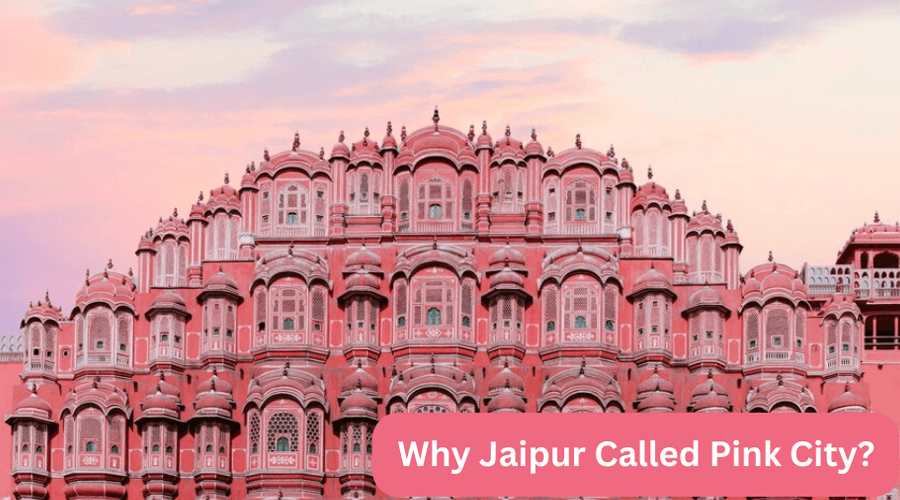India is known worldwide for its diverse culture, rich traditions, and historic cities, each with its unique charm. Among these, Jaipur, the capital of Rajasthan, holds a special place. Popularly referred to as the “Pink City”, Jaipur attracts millions of visitors each year who are fascinated by its vibrant architecture, royal heritage, and colorful history. But why exactly is Jaipur called the Pink City? The answer lies not only in its past but also in the cultural significance of color in Indian tradition.
The Historical Background
The origins of Jaipur can be traced back to the early 18th century when Maharaja Sawai Jai Singh II founded the city in 1727. Unlike many other Indian cities that grew organically, Jaipur was one of the first planned cities in India. Its streets were laid out on a grid system, influenced by Vastu Shastra and traditional Hindu architectural principles.
The story of Jaipur turning into the Pink City, however, dates to the year 1876. At that time, India was still under British colonial rule, and the then Prince of Wales, who later became King Edward VII, was scheduled to visit Jaipur. Eager to welcome the royal guest with grandeur and showcase Rajasthani hospitality, Maharaja Sawai Ram Singh II decided to give the entire city a fresh look.
Why the Color Pink?
In Indian culture, the color pink has long been associated with hospitality and warmth. It is considered a symbol of welcome, joy, and positivity. Maharaja Sawai Ram Singh II instructed that the city’s buildings be painted in terracotta pink to impress the visiting dignitary. Massive efforts were undertaken to repaint the facades of shops, houses, palaces, and forts in uniform pink.
The move was widely appreciated. The Prince of Wales was charmed by the uniform color scheme and the vibrancy of the city. Since then, Jaipur earned the nickname “Pink City.” Interestingly, the practice of painting buildings pink did not end with that historic visit—it became a tradition that continues even today.
The Law that Preserves the Pink Identity
Unlike many other cities that gradually lose their historic character to modernization, Jaipur has managed to preserve its pink façade. This is largely due to the foresight of its rulers and later the local administration. In 1877, Maharaja Sawai Ram Singh II passed a law making it mandatory for all buildings within the old walled city to be painted pink. Even today, municipal laws ensure that the pink color is maintained, preserving the city’s distinct identity.
Walking through the crowded bazaars of Jaipur, visitors find themselves immersed in an unbroken sea of pink shades—from deep terracotta to soft salmon. Landmarks such as the Hawa Mahal, the City Palace, and the Jantar Mantar all contribute to this visually stunning landscape.
Cultural and Tourism Significance
The pink identity of Jaipur is not just about its buildings—it has shaped how the world perceives the city. It has turned Jaipur into a global symbol of heritage tourism. When travelers think of Jaipur, the first image that comes to mind is its pink-hued streets bustling with colorful markets, camels, and traditional handicrafts.
Every year, millions of international and domestic tourists flock to Jaipur to admire this unmatched historic atmosphere. The Pink City also holds a prominent place in the famed Golden Triangle, along with Delhi and Agra, making it one of the most visited tourist circuits in India.
Beyond Pink: The Symbolism of Colors in Rajasthan
Interestingly, Jaipur’s pink identity also contrasts with the use of colors in other parts of Rajasthan. For example, Jodhpur is known as the Blue City, owing to the indigo-painted houses in its old quarters, while Udaipur is called the White City because of its marble palaces. Each city’s color represents not just architectural beauty but also cultural symbolism, creating a unique color-coded map of Rajasthan. Jaipur’s pink hue, however, remains the most iconic and world-renowned.
Modern-Day Pink City
While Jaipur has expanded far beyond its walled old city, the original quarters remain carefully protected. The pink color has become more than just an architectural trademark—it is a symbol of pride for the people of Jaipur. Even contemporary buildings in the heritage zones adhere to the mandatory pink paint rule. In fact, during major festivals like Diwali and Teej, the city glows in even brighter hues with decorative lights embellishing the pink backdrops, creating a magical scene.
In 2019, Jaipur was recognized as a UNESCO World Heritage City, further solidifying the importance of its unique cultural and architectural appeal. The title reinforced the city’s reputation as India’s Pink City and ensured global efforts to preserve its charm.
Conclusion
Jaipur is called the Pink City because of a historical decision made in 1876 to paint the town pink as a gesture of hospitality towards the visiting Prince of Wales. What began as a royal initiative became a permanent identity that continues centuries later. Today, the pink buildings not only tell a story of Jaipur’s rich royal past but also symbolize warmth and hospitality that define the spirit of Rajasthan.
The next time one walks through the pink-hued lanes of Jaipur, it is worth remembering that this color is more than just paint—it is history, tradition, culture, and pride woven together into the identity of one of India’s most enchanting cities.



